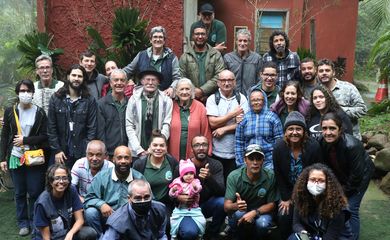Over half of Brazilians live on the coast, 2022 Census shows

Brazil’s 2022 Census shows that 111.28 million people live up to 150 kilometers from the country’s coast. The amount represents 54.8 percent of the total population in 2022 (203.08 mi), as per figures from statistics bureau IBGE.

From 2010, an increase of almost 5 million people in absolute numbers (106.37 million in 2010) was recorded. However, the proportion of people living on the coast compared to the total population shrank from the previous 55.8 percent.
The survey shows that 9.42 million people live on the border, i.e. at a maximum distance of 150 kilometers from the limits of the Brazilian territory. The figure adds up to 4.6 percent of the population. Part of the southern coast of Rio Grande do Sul state and the northwest of Amapá are both on the coast and on the border.
In absolute terms, a rise of 603 thousand living on the border was observed. In relative terms, however, the proportion remained at 4.6 percent of the population.
Census tracts
The results were obtained from a total of 452,388 census tracts—territories officially delimited, which can be small areas within a neighborhood or large rural areas. They allow a more in-depth look at social indicators of Brazil’s 5,568 municipalities, in addition to the Federal District and the Fernando de Noronha archipelago.
The data show that the most populous census tract is the Papuda prison in the Federal District, with 10,163 inhabitants. Brasília is also home to the tract with the highest number of households: Condomínio Itapoã Parque, with 6,322 households.
This method can reveal how many people live near hospitals, schools, shopping centers, and even in areas subject to natural disasters.
According to IBGE researcher Fernando Damasco, the agency has been expanding the number of tracts since 1940, when there were only 32 thousand of them.
“Between the 2000 Census [when tracts totaled 215,860] and the 2022 Census, we effectively doubled the number of tracts. Between 2010 and 2022, we created 135,764 new ones.”
He points out that the 2022 Census introduced a series of improvements and refinements in the delimitation of census tracts.
“First, we began to make intensive use of high-resolution orbital imaging services and implemented the use of geo-referenced administrative records from various sources. This allowed us to conduct collection with a very refined knowledge of the territory, with significant gains in coverage and quality of information.”





